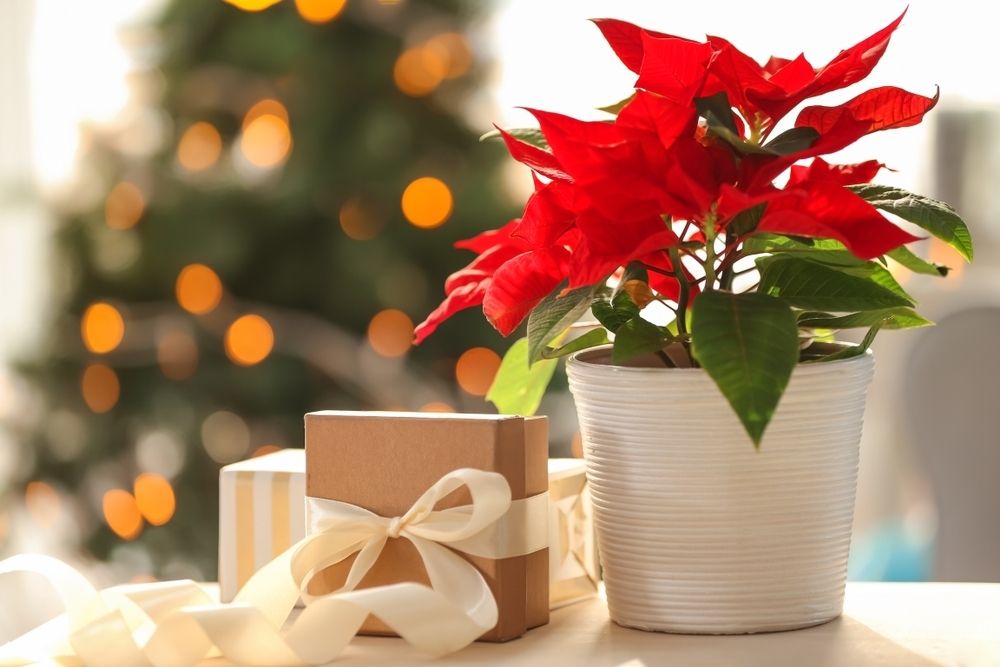Poinsettia

Today, it's Poinsettia Day! With their bright red flowers and deep green leaves, poinsettias truly are the colours of Christmas. Their vibrant flowers brighten up our homes in the depths of winter. And with a bit of care, it’s possible to keep your poinsettia going right through the year, and even get it to flower again next Christmas.
About poinsettias
Poinsettias are native to Mexico, where they grow in tropical forests, so they are happiest in a warm, humid environment. They are what’s known as a short-day plant, so will only start to flower once they sense the day length starting to get shorter.
Caring for poinsettia
One of the keys to keeping your poinsettia looking good over Christmas is not to let it get cold. This starts right from the moment you buy your plant, so put it in a closed bag before leaving the shop to avoid a sudden shock of cold air.
Once you get your poinsettia home, keep it at a constant temperature, ideally between 15-18°C (59-64°F) and never below 13°C (55°F). Poinsettias do best in bright but indirect light. Avoid putting them on windowsills, as the nighttime temperature right next to a window can get freezing.
Create a humid environment around your poinsettia by placing it on a shallow tray filled with pebbles and keeping the tray topped up with water. Regular misting also helps keep the atmosphere around the plant humid.
Don’t overwater your poinsettia. Please wait until the compost is starting to dry out before watering, and never leave the plant with its roots sitting in water. Feed monthly with high potash food.
If your plant’s leaves turn yellow, it probably means you are either over-or under-watering it. Check the dampness of the compost with your finger and adjust your watering routine accordingly.
How to keep a poinsettia alive after Christmas
Getting a poinsettia to rebloom takes a bit of effort, but the results are well worth it. Here’s how it’s done:
- Let your plant go dormant after Christmas by letting the soil dry out so that the leaves wilt and drop off. Move the plant somewhere cool, and water sparingly, just enough to keep the compost slightly moist.
- In spring, cut it back to 10-15cm (4-6in) high. Repot it and place it in a bright spot at a temperature of between 15-18°C (59-64°F). It should start to grow back. Water regularly through summer and feed fortnightly.
- When autumn starts and the days get shorter, mimic this indoors by putting your poinsettia in a dark cupboard for 12 hours each day. For the other 12 hours, keep it somewhere bright at a temperature of around 18°C (64°F). After about four weeks, you should see signs of the bracts starting to turn red. After eight weeks, the plant should be in full bloom.
If you’re looking for a plant to brighten up your home this winter, come and visit our centre. With our sensational range of indoor plants, you’ll be spoilt for choice.





